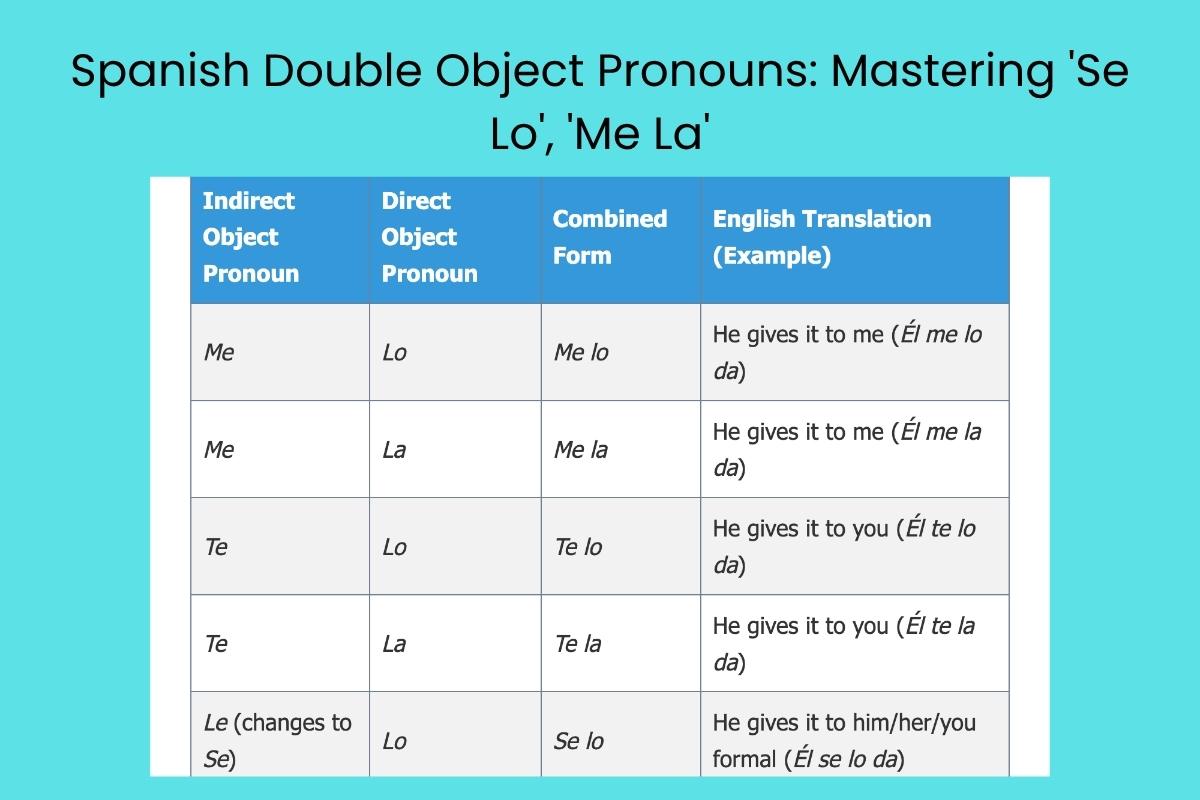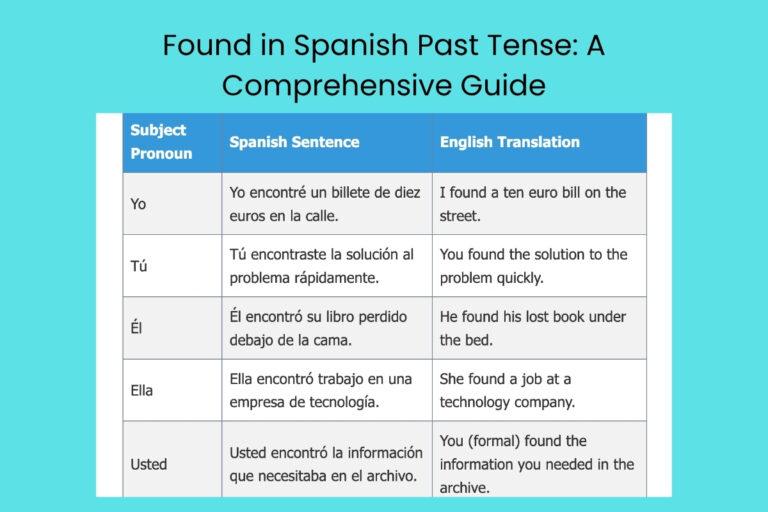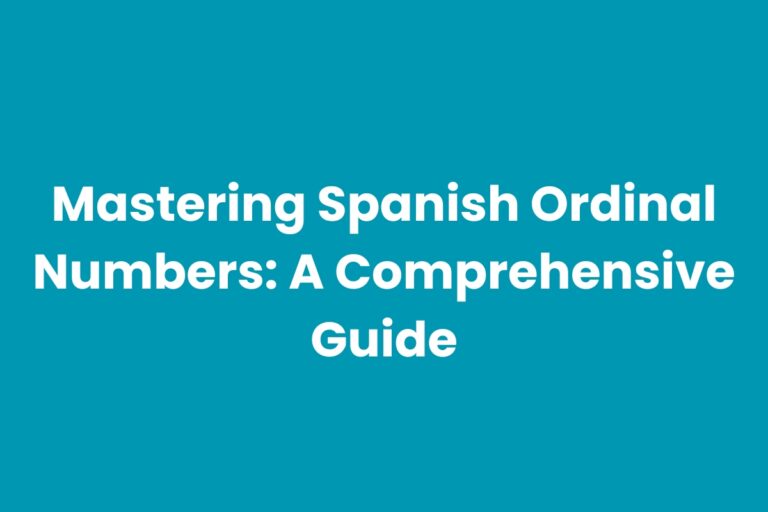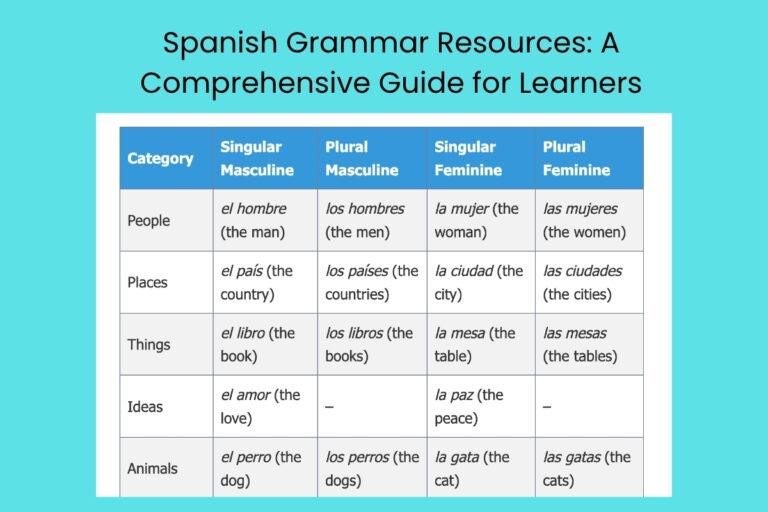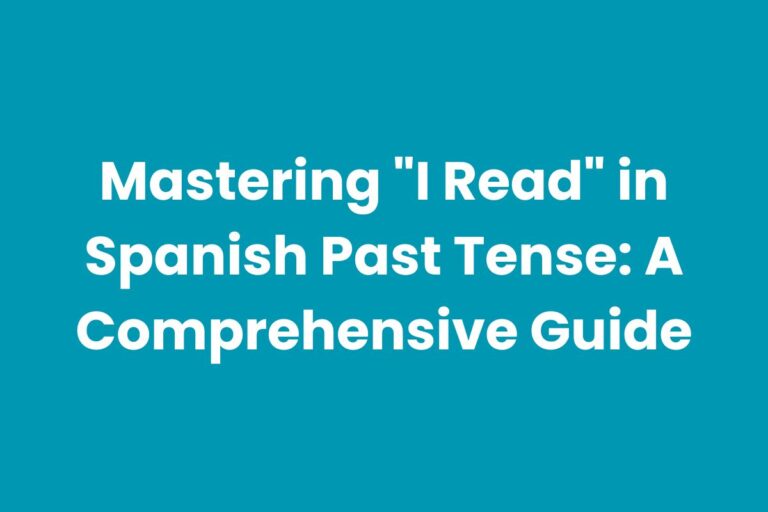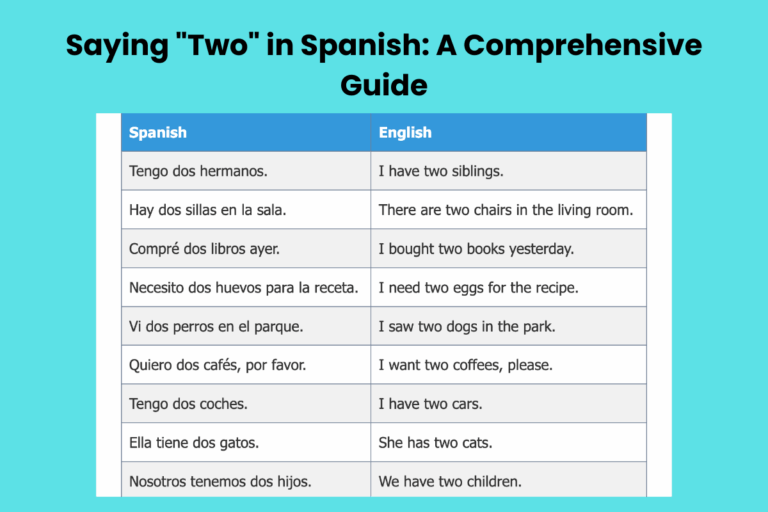Spanish Double Object Pronouns: Mastering ‘Se Lo’, ‘Me La’
Navigating the world of Spanish pronouns can be tricky, especially when dealing with double object pronouns. This guide focuses on mastering the correct order and usage of these pronouns, particularly combinations like “se lo,” “me la,” and others.
Understanding this grammar point is crucial for achieving fluency and avoiding common errors in Spanish. Whether you’re a beginner grappling with basic sentence structure or an intermediate learner aiming for more nuanced expression, this article will provide you with the knowledge and practice you need to confidently use double object pronouns in Spanish.
Table of Contents
- Introduction
- Definition of Double Object Pronouns
- Structural Breakdown
- Types and Categories
- Examples
- Direct and Indirect Object Pronoun Examples
- Reflexive and Direct Object Pronoun Examples
- All Combinations Examples
- Examples with Clarification Phrases
- Usage Rules
- Common Mistakes
- Practice Exercises
- Advanced Topics
- FAQ
- Conclusion
Definition of Double Object Pronouns
Double object pronouns in Spanish occur when a verb takes both a direct object and an indirect object, and both are replaced by pronouns. This construction requires careful attention to the order and form of the pronouns.
The direct object receives the direct action of the verb, while the indirect object receives the benefit or harm of that action.
Understanding the role of each type of object pronoun is crucial before delving into combinations. Let’s briefly review direct, indirect, and reflexive pronouns.
Direct Object Pronouns
Direct object pronouns replace the noun that directly receives the action of the verb. They answer the question “what?” or “whom?” Examples include:
- Me (me)
- Te (you, informal)
- Lo (him, it, you formal – masculine)
- La (her, it, you formal – feminine)
- Nos (us)
- Os (you, informal plural, Spain only)
- Los (them, you formal plural – masculine)
- Las (them, you formal plural – feminine)
For example: “Veo el libro” (I see the book) becomes “Lo veo” (I see it).
Indirect Object Pronouns
Indirect object pronouns indicate to whom or for whom an action is done. They answer the question “to whom?” or “for whom?” Examples include:
- Me (to/for me)
- Te (to/for you, informal)
- Le (to/for him/her/you formal)
- Nos (to/for us)
- Os (to/for you, informal plural, Spain only)
- Les (to/for them/you formal plural)
For example: “Doy el libro a Juan” (I give the book to Juan) becomes “Le doy el libro” (I give the book to him) or “Se lo doy” (I give it to him).
Reflexive Pronouns
Reflexive pronouns indicate that the subject of the verb is also the object of the verb. The action “reflects” back to the subject.
Examples include:
- Me (myself)
- Te (yourself, informal)
- Se (himself, herself, itself, yourself formal, themselves, yourselves formal)
- Nos (ourselves)
- Os (yourselves, informal plural, Spain only)
- Se (themselves, yourselves formal)
For example: “Me lavo” (I wash myself).
Structural Breakdown
The key to mastering double object pronouns lies in understanding their structure and placement within a sentence. The order of the pronouns is rigid and must be followed to ensure grammatical correctness.
Standard Pronoun Order
The standard order for double object pronouns is as follows:
- Reflexive pronoun (me, te, se, nos, os, se)
- Indirect object pronoun (me, te, le, nos, os, les) – which changes to ‘se’ when followed by lo, la, los, or las
- Direct object pronoun (lo, la, los, las)
- Verb
When the indirect object pronoun is *le* or *les*, it changes to *se* when it precedes the direct object pronouns *lo, la, los,* or *las*. This change is crucial to avoid the grammatically incorrect sequences *le lo, le la, les lo,* and *les la*.
For instance, instead of saying *”Le lo doy”* (which is incorrect), you would say *”Se lo doy”* (I give it to him/her/you formal). The *le* changes to *se*.
Placement Rules
Double object pronouns typically precede the conjugated verb. However, there are exceptions to this rule:
- Infinitive verbs: When used with an infinitive, the pronouns can be attached to the end of the infinitive (e.g., Quiero dárselo – I want to give it to him/her).
- Gerunds: Similarly, pronouns can be attached to the end of a gerund (e.g., Estoy dándoselo – I am giving it to him/her).
- Affirmative commands: In affirmative commands, the pronouns are attached to the end of the verb (e.g., Dáselo – Give it to him/her).
When pronouns are attached to infinitives, gerunds, or affirmative commands, an accent mark might be needed to maintain the original stress of the word. This is a key point to remember when writing Spanish.
Types and Categories
Understanding the different combinations of double object pronouns and the variations of “se” is essential for accurate usage.
Common Pronoun Combinations
The following table illustrates common combinations of indirect and direct object pronouns:
| Indirect Object Pronoun | Direct Object Pronoun | Combined Form | English Translation (Example) |
|---|---|---|---|
| Me | Lo | Me lo | He gives it to me (Él me lo da) |
| Me | La | Me la | He gives it to me (Él me la da) |
| Te | Lo | Te lo | He gives it to you (Él te lo da) |
| Te | La | Te la | He gives it to you (Él te la da) |
| Le (changes to Se) | Lo | Se lo | He gives it to him/her/you formal (Él se lo da) |
| Le (changes to Se) | La | Se la | He gives it to him/her/you formal (Él se la da) |
| Nos | Lo | Nos lo | He gives it to us (Él nos lo da) |
| Nos | La | Nos la | He gives it to us (Él nos la da) |
| Os | Lo | Os lo | He gives it to you (plural, informal – Spain) (Él os lo da) |
| Os | La | Os la | He gives it to you (plural, informal – Spain) (Él os la da) |
| Les (changes to Se) | Lo | Se lo | He gives it to them/you formal (plural) (Él se lo da) |
| Les (changes to Se) | La | Se la | He gives it to them/you formal (plural) (Él se la da) |
| Me | Los | Me los | He gives them to me (Él me los da) |
| Me | Las | Me las | He gives them to me (Él me las da) |
| Te | Los | Te los | He gives them to you (Él te los da) |
| Te | Las | Te las | He gives them to you (Él te las da) |
| Le (changes to Se) | Los | Se los | He gives them to him/her/you formal (Él se los da) |
| Le (changes to Se) | Las | Se las | He gives them to him/her/you formal (Él se las da) |
| Nos | Los | Nos los | He gives them to us (Él nos los da) |
| Nos | Las | Nos las | He gives them to us (Él nos las da) |
| Os | Los | Os los | He gives them to you (plural, informal – Spain) (Él os los da) |
| Os | Las | Os las | He gives them to you (plural, informal – Spain) (Él os las da) |
| Les (changes to Se) | Los | Se los | He gives them to them/you formal (plural) (Él se los da) |
| Les (changes to Se) | Las | Se las | He gives them to them/you formal (plural) (Él se las da) |
As you can see, the indirect object pronouns *le* and *les* always change to *se* when followed by *lo, la, los,* or *las*.
Variations of ‘Se’
The pronoun *se* can have multiple roles, leading to potential confusion. It can act as:
- A reflexive pronoun (e.g., Él se lava – He washes himself).
- A reciprocal pronoun (e.g., Ellos se aman – They love each other).
- The replacement for *le* or *les* before *lo, la, los,* or *las* (e.g., Se lo di – I gave it to him/her/them).
- An impersonal pronoun (e.g., Se habla español aquí – Spanish is spoken here).
Context is crucial in determining the meaning of *se*. Understanding the verb and the rest of the sentence will help you identify its function.
Examples
To solidify your understanding, let’s explore various examples of double object pronoun usage.
Direct and Indirect Object Pronoun Examples
This table focuses on sentences with both direct and indirect object pronouns.
| Spanish Sentence | English Translation |
|---|---|
| Me lo diste. | You gave it to me. |
| Te la compré. | I bought it for you. |
| Se lo voy a decir. | I am going to tell it to him/her/you (formal). |
| Nos la regalaron. | They gave it to us. |
| Os lo enviaron. | They sent it to you (plural, informal – Spain). |
| Se las mostré. | I showed them to him/her/you (formal). |
| ¿Quién te lo dijo? | Who told it to you? |
| Ella me lo explicó. | She explained it to me. |
| No se lo pidas. | Don’t ask him/her/you (formal) for it. |
| Siempre nos la cuenta. | He/She always tells it to us. |
| Te lo prometo. | I promise it to you. |
| Se lo vendí. | I sold it to him/her/you (formal). |
| Me los preparó. | He prepared them for me. |
| Te las devolví. | I returned them to you. |
| Se los quiero dar. | I want to give them to him/her/you (formal). |
| Nos las van a enviar. | They are going to send them to us. |
| Os lo puedo explicar. | I can explain it to you (plural, informal – Spain). |
| Se lo debemos decir. | We must tell it to him/her/you (formal). |
| Me lo puedes prestar? | Can you lend it to me? |
| Te la voy a comprar. | I am going to buy it for you. |
| Se lo estoy escribiendo. | I am writing it to him/her/you (formal). |
| Nos lo están explicando. | They are explaining it to us. |
| Os lo están vendiendo. | They are selling it to you (plural, informal – Spain). |
| Se lo estaban mostrando. | They were showing it to him/her/you (formal). |
| Me lo darán mañana. | They will give it to me tomorrow. |
| Te la enviaré la semana que viene. | I will send it to you next week. |
Reflexive and Direct Object Pronoun Examples
These examples combine reflexive pronouns with direct object pronouns, showcasing how actions reflect back on the subject while also involving a direct object.
| Spanish Sentence | English Translation |
|---|---|
| Me lo lavo. | I wash it (myself). |
| Te la pones. | You put it on (yourself). |
| Se lo quita. | He/She takes it off (himself/herself). |
| Nos lo comemos. | We eat it (ourselves). |
| Os lo bebéis. | You drink it (yourselves – Spain). |
| Se las compra. | He/She buys them (for himself/herself). |
| Me lo imagino. | I imagine it (to myself). |
| Te lo guardas. | You keep it (for yourself). |
| Se lo merece. | He/She deserves it (for himself/herself). |
| Nos lo ganamos. | We earn it (for ourselves). |
| Os lo encontráis. | You find it (yourselves – Spain). |
| Se lo preparan. | They prepare it (for themselves). |
| Me lo como todo. | I eat it all (myself). |
| Te la bebes rápidamente. | You drink it quickly (yourself). |
| Se lo compra cada año. | He/She buys it every year (for himself/herself). |
| Nos lo creemos fácilmente. | We believe it easily (ourselves). |
| Os lo imagináis a menudo. | You imagine it often (yourselves – Spain). |
| Se lo permiten raramente. | They rarely allow it (for themselves). |
| Me lo recuerdo siempre. | I always remember it (to myself). |
| Te la aprendes de memoria. | You learn it by heart (yourself). |
| Se lo ocultan a menudo. | They often hide it (from themselves). |
| Nos lo preguntamos a veces. | We sometimes ask ourselves it. |
| Os lo explicáis con detalle. | You explain it in detail (yourselves – Spain). |
| Se lo repiten constantemente. | They constantly repeat it (to themselves). |
| Me lo merezco por el esfuerzo. | I deserve it for the effort (myself). |
| Te la compras con tu propio dinero. | You buy it with your own money (yourself). |
All Combinations Examples
This table provides a more comprehensive set of examples covering various combinations of direct, indirect and reflexive pronoun usages.
| Spanish Sentence | English Translation |
|---|---|
| Me lo explicas a mí. | You explain it to me. |
| Te la envié a ti. | I sent it to you. |
| Se lo di a él. | I gave it to him. |
| Nos la vendieron a nosotros. | They sold it to us. |
| Os lo mostraron a vosotros. | They showed it to you (plural, informal – Spain). |
| Se lo regalaron a ellos. | They gave it to them. |
| Me lo compré para mí. | I bought it for myself. |
| Te lo guardaste para ti. | You kept it for yourself. |
| Se lo preparó para sí mismo. | He prepared it for himself. |
| Nos lo comimos para nosotros. | We ate it for ourselves. |
| Os lo bebisteis para vosotros. | You drank it for yourselves (Spain). |
| Se lo compraron para sí mismos. | They bought it for themselves. |
| Me lo dijo mi madre. | My mother told it to me. |
| Te la prestó tu hermano. | Your brother lent it to you. |
| Se lo vendió el vecino. | The neighbor sold it to him. |
| Nos lo explicó el profesor. | The teacher explained it to us. |
| Os lo mostró el guía. | The guide showed it to you (plural, informal – Spain). |
| Se lo regalaron sus amigos. | His friends gave it to him. |
| Me lo tienes que dar. | You have to give it to me. |
| Te la puedo prestar. | I can lend it to you. |
| Se lo vamos a enviar. | We are going to send it to him. |
| Nos lo quieren vender. | They want to sell it to us. |
| Os lo deben explicar. | They should explain it to you (plural, informal – Spain). |
| Se lo pueden regalar. | They can give it to him. |
| Me lo estás explicando bien. | You are explaining it to me well. |
| Te la estoy comprando ahora. | I am buying it for you now. |
Examples with Clarification Phrases
Adding clarification phrases with “a” helps to remove ambiguity, especially when using *se*.
| Spanish Sentence | English Translation |
|---|---|
| Se lo di a Juan. | I gave it to Juan. |
| Se lo compré a ella. | I bought it for her. |
| Se lo expliqué a usted. | I explained it to you (formal). |
| Se lo mostré a mis padres. | I showed it to my parents. |
| Se lo envié a la empresa. | I sent it to the company. |
| Se lo pedí al camarero. | I asked the waiter for it. |
| Se lo regalé a mi hermana. | I gave it to my sister. |
| Se lo conté a mi amigo. | I told it to my friend. |
| Se lo devolví al banco. | I returned it to the bank. |
| Se lo compré a María. | I bought it for Maria. |
| Se lo dije a Pedro. | I told it to Pedro. |
| Se lo expliqué al profesor. | I explained it to the teacher. |
| Se lo mostré a mi abuela. | I showed it to my grandmother. |
| Se lo envié al cliente. | I sent it to the client. |
| Se lo pedí a la dependienta. | I asked the shop assistant for it. |
| Se lo regalé a mi novio. | I gave it to my boyfriend. |
| Se lo conté a mi jefe. | I told it to my boss. |
| Se lo devolví a la tienda. | I returned it to the store. |
| Se lo compré a Juan y María. | I bought it for Juan and Maria. |
| Se lo dije a todos mis amigos. | I told it to all my friends. |
| Se lo expliqué a los estudiantes. | I explained it to the students. |
| Se lo mostré a los niños. | I showed it to the children. |
| Se lo envié a mis padres por correo. | I sent it to my parents by mail. |
| Se lo pedí al director del colegio. | I asked the school principal for it. |
| Se lo regalé a mi mejor amiga. | I gave it to my best friend. |
Usage Rules
Understanding the specific rules governing the use of double object pronouns is crucial for mastering this aspect of Spanish grammar.
Clarification with “a” + noun/pronoun
As seen in the examples, adding “a” + noun/pronoun after the verb clarifies to whom the action is directed, especially when using *se*. This is particularly important when the context doesn’t make the recipient clear. For example, “Se lo di a mi hermano” (I gave it to my brother) clarifies who received the item.
Exceptions to the Rules
While the pronoun order is generally fixed, there can be slight variations in specific constructions. For example, in some dialects, you might hear *le* used instead of *lo* for masculine direct objects (leísmo), although this is generally considered incorrect by the Real Academia Española.
Formal vs. Informal Usage
The choice between *te* (informal you) and *le/se* (formal you) impacts pronoun usage. Remember to use *se lo/la/los/las* when addressing someone formally.
The same applies to *os* (informal, plural you in Spain) and *se los/las* (formal, plural you).
Common Mistakes
Avoiding common errors can significantly improve your accuracy with double object pronouns.
Incorrect Pronoun Order
One of the most common mistakes is using the incorrect pronoun order. Remember that the indirect object pronoun (which changes to *se* when necessary) always precedes the direct object pronoun.
Incorrect: Lo me diste.
Correct: Me lo diste. (You gave it to me.)
Confusion between ‘Le’, ‘Lo’, and ‘La’
Many learners struggle with when to use *le*, *lo*, or *la*. *Le* is an indirect object pronoun, while *lo* and *la* are direct object pronouns. Furthermore, *le* changes to *se* before *lo, la, los,* and *las*.
Incorrect: Le lo di.
Correct: Se lo di. (I gave it to him/her/you formal.)
Omission of Required Pronouns
In Spanish, when using indirect and direct object pronouns, both must be present even if they seem redundant. Unlike English, you cannot omit one of the pronouns.
Incorrect: Di a Juan el libro. (Intended: I gave Juan the book, then shortened incorrectly)
Correct: Se lo di a Juan. (I gave it to Juan.)
Practice Exercises
Test your knowledge with these practice exercises designed to reinforce your understanding of double object pronouns.
Exercise 1: Fill in the Blanks
Complete the following sentences with the correct double object pronouns.
| Question | Answer |
|---|---|
| Yo ____ ____ doy a ti (el libro). | te lo |
| Ella ____ ____ compró a mí (la camisa). | me la |
| Nosotros ____ ____ vamos a regalar a ellos (los juguetes). | se los |
| ¿____ ____ puedes prestar a mí (el bolígrafo)? | Me lo |
| Él ____ ____ está explicando a usted (la lección). | se la |
| Vosotros ____ ____ queréis mostrar a nosotros (las fotos). | nos las |
| Yo ____ ____ debo decir a él (la verdad). | se la |
| Ella ____ ____ va a enviar a ti (el paquete | te lo |
Exercise 2: Translate the Sentences
Translate the following sentences into Spanish using double object pronouns.
| English Sentence | Spanish Translation |
|---|---|
| I am going to give it to you (informal). | Te lo voy a dar. / Voy a dártelo. |
| She bought it for me. | Ella me lo compró. |
| We have to send them to him. | Se los tenemos que enviar. / Tenemos que enviárselos. |
| Can you (formal) explain it to me? | ¿Me lo puede explicar? |
| They are showing it to us. | Nos lo están mostrando. / Están mostrándonoslo. |
Exercise 3: Error Correction
Identify and correct the errors in the following sentences.
| Incorrect Sentence | Correct Sentence |
|---|---|
| Le lo di a Juan. | Se lo di a Juan. |
| Me la compraste a ti? | ¿Te la compraste? |
| Nos los van a enviar a nosotros. | Nos los van a enviar. |
| Te lo estoy diciendo a ti. | Te lo estoy diciendo. |
| Les lo regalé a ellos. | Se lo regalé a ellos. |
Advanced Topics
For those looking to deepen their understanding, here are some advanced topics related to double object pronouns.
Leísmo, Laísmo, Loísmo
Leísmo, laísmo, and loísmo are variations in pronoun usage that deviate from standard Spanish grammar. Leísmo involves using *le* instead of *lo* for masculine direct objects. Laísmo involves using *la* instead of *le* for indirect objects, and loísmo involves using *lo* instead of *le* for indirect objects. While these usages exist in some dialects, they are generally discouraged in formal Spanish.
Double Pronouns with Gerunds and Infinitives
As mentioned earlier, double object pronouns can be attached to gerunds and infinitives. When attaching pronouns, remember to add an accent mark to maintain the original stress.
For example:
- Estoy escribiéndosela. (I am writing it to her.)
- Quiero comprártelo. (I want to buy it for you.)
FAQ
Here are some frequently asked questions about Spanish double object pronouns.
Why does ‘le’ change to ‘se’ before ‘lo’, ‘la’, ‘los’, or ‘las’?
This change is purely for phonetic reasons. The sequences “le lo,” “le la,” “les lo,” and “les la” are considered awkward and difficult to pronounce in Spanish.
Changing *le* or *les* to *se* simplifies the pronunciation.
Can I use double object pronouns in all Spanish-speaking countries?
Yes, the rules for double object pronouns are generally consistent across all Spanish-speaking countries. However, regional variations in pronoun usage (such as *leísmo*) may exist.
How can I practice using double object pronouns effectively?
Practice by translating sentences, completing exercises, and engaging in conversations with native speakers. Pay attention to how native speakers use double object pronouns and try to incorporate them into your own speech and writing.
Is it always necessary to include the “a + noun/pronoun” clarification phrase?
No, it’s not always necessary, but it’s helpful when the recipient of the action is unclear or when you want to emphasize who is receiving the action.
What happens if I use the wrong pronoun order?
Using the wrong pronoun order can lead to confusion and make your sentences grammatically incorrect. Always double-check the order to ensure accuracy.
Conclusion
Mastering Spanish double object pronouns requires practice and attention to detail. By understanding the roles of direct, indirect, and reflexive pronouns, following the correct pronoun order, and avoiding common mistakes, you can confidently use these pronouns in your Spanish communication.
Keep practicing, and don’t be afraid to make mistakes along the way. Each mistake is a learning opportunity that will bring you closer to fluency.

